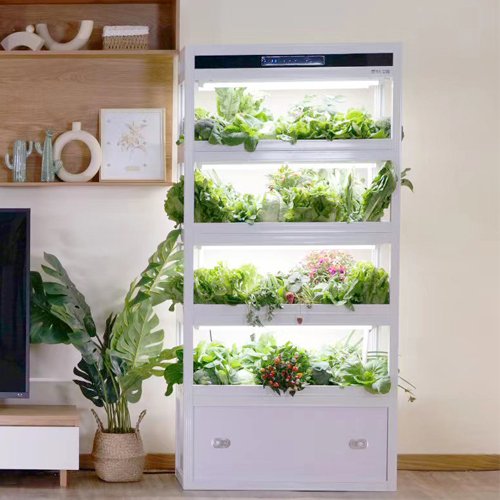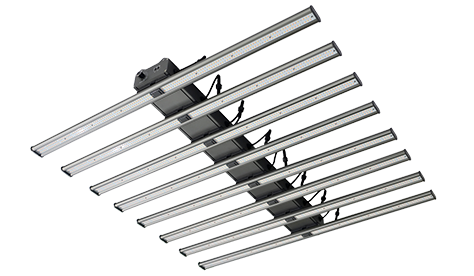Sognando pomodori succosi che esplodono di sapore, erbe che ballano alla luce del sole e un'oasi personale traboccante di bontà nostrana.
Costruire il tuo sistema idroponico non è solo per i maverick fai -da -te stagionati. In effetti, con un po 'di guida e l'approccio giusto, anche i botanici principianti possono coltivare il loro paradiso idroponico.
Navigeremo nei due sistemi idroponici più per principianti- La cultura delle acque profonde (DWC) e il sistema di flusso e flusso.
Prima di iniziare: scegliere il tuo sistema
Esploriamo i due sistemi che costruiremo:
Deep Water Culture (DWC): in DWC, Le radici delle piante penzolano in una soluzione ricca di nutrienti, costantemente immersi in ossigeno grazie a una pompa dell'aria. Semplice da configurare e mantenere, DWC è l'ideale per verdure a foglia e erbe.
Ebb e sistema di flusso: questo sistema inonda periodicamente e scarica il letto di crescita, imitando l'ascesa naturale e la caduta delle maree. Ciò ossigena le radici e impedisce l'accumulo di nutrienti, rendendolo adatto a una gamma più ampia di piante, tra cui frutta e verdura.
Costruire il tuo sistema DWC
Il sistema DWC è un sistema idroponico popolare e intuitivo. Le radici delle piante sono immerse in acqua ossigenata, permettendo loro di ricevere ampie acqua, sostanze nutritive e ossigeno. Questo sistema richiede una pompa d'aria e una pietra d'aria per mantenere i livelli di ossigeno nell'acqua.
Materiali:
Pietra d'aria
Pompa dell'aria
Lattina netta
Serbatoio (come una tote o un secchio)
Soluzione nutritiva (formula idroponica)
Coltello per taglio della piattaforma di plastica in schiuma
Schiuma di polistirene per l'uso come zattera
Medium in crescita (rockwool, argilla ciottoli)
Timer (opzionale)
Passaggi:
1. Preparare il serbatoio: fori di perforazione nel coperchio per la pietra dell'aria e la pentola a rete. Assicurarsi che il livello dell'acqua non immergi gli steli della pianta.
2. Iniettare una soluzione nutritiva nel serbatoio: mescolare il concentrato secondo le istruzioni del produttore e riempire fino a una profondità di 30 centimetri o più profonda.
3. Inserire la pietra dell'aria e la pentola di rete: immergere la pietra dell'aria in acqua e fissare la pentola di rete nei fori del coperchio.
4. Tagliare la schiuma di polistirene per creare una zattera mobile, posizionandola circa 3 centimetri sotto la parte superiore del contenitore o del serbatoio. Tagliare i buchi nella schiuma con una spaziatura sufficiente.
5. Iniettare mezzo di crescita nella pentola di rete: posizionare delicatamente le radici della pianta nel mezzo di crescita, mantenendo gli steli sopra la linea di galleggiamento.
6. Posizionare la pianta nella pentola di rete, quindi inserire la pentola di rete nei fori nella piattaforma di plastica in schiuma. La pentola netta consente alle radici delle piante di crescere dal fondo e dai lati, rendendo più facile accedere a nutrienti e ossigeno.
7. Collegare la pompa dell'aria e il timer (opzionale): un timer abilita i cicli di consegna dei nutrienti automatici.
Costruire il tuo sistema di flusso e flusso
Il sistema EBB e Flow è più tecnico e complesso, ma offre anche una maggiore versatilità. La sua funzionalità comporta un afflusso periodico di acqua e deflusso dal serbatoio in base alle esigenze della pianta, al ciclo di crescita e persino alla temperatura.
Durante il processo di afflusso, l'acqua ossigenata scorre attraverso il sistema, fornendo acqua e sostanze nutritive alle piante. Quando si scarica, la soluzione nutritiva nell'acqua ritorna al serbatoio per il riutilizzo, che richiede una pompa per immergersi e drenare il vassoio di crescita.
Materiali:
Container del serbatoio (tote, secchio)
Letto di semina (contenitore di plastica,
Tubi in PVC)
Bell e riser sifone
Pompa e timer
Mezzo di crescita (ciottoli di argilla, perlite)
Pentole e coperchi netti
Passi:
1. Creare il letto di piantagioni: fori di perforazione nella parte inferiore del contenitore per il drenaggio. Se si utilizzano i tubi in PVC, collegarli con gomiti e tees per formare una griglia.
2. Installa la campana e il montante del sifone: posizionare la campana di sifone sul fondo del serbatoio e il montante si estende sopra il livello dell'acqua del letto di semina.
3. Collegare la pompa e il timer: la pompa spinge la soluzione nutritiva lungo il riser, immergendo il letto di semina. Il timer controlla il ciclo di inondazioni e drenaggio.
4. Riempi il letto di piantagione con medio di crescita e pentole nette: seguendo i passaggi per la creazione di un sistema DWC, posizionare le vasi netti sopra il mezzo di crescita.
Mantenere il tuo sistema idroponico
Monitorare i livelli di nutrienti e il pH: Testare regolarmente la soluzione e regolarla per mantenere una crescita ottimale delle piante.
Mantieni il sistema pulito: Sostituire regolarmente la soluzione nutritiva e asciugare le attrezzature per prevenire la crescita delle alghe.
Pota le tue piante: Potatura regolare incoraggia una crescita sana e impedisce il sovraffollamento.
Acquisto contro edificio
Ad essere onesti, non tutti sono appassionati di fai -da -te. Mentre costruire il tuo sistema idroponico può essere un'esperienza gratificante, portare un senso di realizzazione e personalizzazione, richiede anche tempo, capacità tecniche e sufficienti pazienti per risolvere i problemi.
Per molti appassionati di vita più verde, la pressione degli utensili elettrici e dei tubi in PVC può portare rapidamente a gruppi appassiti di prodotti freschi coltivati in casa. Perché non acquistare un sistema idroponico esistente invece di passare attraverso l'acquisto e la costruzione di materiali?
Tutto ciò di cui hai bisogno viene ben confezionato, etichettato e con istruzioni chiare, rendendolo comprensibile anche per qualcuno che nutre le piante per la prima volta. Non c'è bisogno di decifrare gli schemi criptici o indovinare ogni connessione.
Dì addio alle frustrazioni di progetti fai -da -te e connessioni che perdono. Invece, puoi goderti verdure insalate nitide o succosi pomodorini in pochissimo tempo.
I sistemi idroponici di Auxgrow sono in genere progettati pensando alla modularità. Puoi aggiungere un'altra torre di piantagione, un altro mobile di coltivazione o sostituire i componenti man mano che il pollice verde cresce.
Dai paradisi delle erbe desktop ai paesaggi vegetali verticali, forniamo soluzioni per vari spazi e diverse esigenze. Se sei interessato ai nostri sistemi idroponici, ti preghiamo di contattarci per le informazioni più dettagliate.



Suggerimenti bonus
Inizia in piccolo con una o due piante per acquisire esperienza prima di espandere il sistema idroponico.
Ricerca le esigenze specifiche delle piante che scegli di crescere.
Unisciti alle comunità idroponiche online per supporto e consulenza.
Jayes
In qualità di responsabile del marketing digitale presso AUXGROW, Jayes unisce la passione per i sistemi idroponici e l'esperienza nelle luci di coltivazione a LED. Con esperienza pratica e profonda comprensione, Jayes ti guida attraverso il mondo della coltivazione sostenibile.






